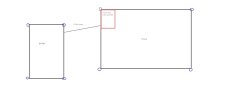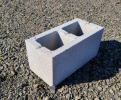Another friend wants 8 cameras installed at his house/garage it has a crawl space of course no attic access. The crawl space is only 3 feet off the ground so my job is to avoid it. The crawl space wall is made of Concrete Retaining Wall Block with cement on it so it does not look like a Concrete Retaining Wall Block.
My idea is to drill a hole through the Concrete Retaining Wall Block right where the closet is then go straight up into the closet and use PVC pipe i think it would only be 5 feet at the most from the closet inside to the outside of the house so pulling cables should be easy.
Of course the other way would be to drill straight through the wall into the closet but he wants it in through the block wall as it can he hidden by a bush.
As far as the outside cameras i can just run the cables around the foundations of the house as he has not added any landscaping yet that will cover it up later and then i can do what i have in the past to mount the cameras with aluminum bars from lowes.
Also need to dig a trench that is about 50 feet to the garage. The garage is easy since it is not insulated and has no dry wall.
Just looking for ideas and i have no clue on what to use to drill a block wall my only fear is instead of a round hole it crumbles.
The circles are cameras by the way.
My idea is to drill a hole through the Concrete Retaining Wall Block right where the closet is then go straight up into the closet and use PVC pipe i think it would only be 5 feet at the most from the closet inside to the outside of the house so pulling cables should be easy.
Of course the other way would be to drill straight through the wall into the closet but he wants it in through the block wall as it can he hidden by a bush.
As far as the outside cameras i can just run the cables around the foundations of the house as he has not added any landscaping yet that will cover it up later and then i can do what i have in the past to mount the cameras with aluminum bars from lowes.
Also need to dig a trench that is about 50 feet to the garage. The garage is easy since it is not insulated and has no dry wall.
Just looking for ideas and i have no clue on what to use to drill a block wall my only fear is instead of a round hole it crumbles.
The circles are cameras by the way.


